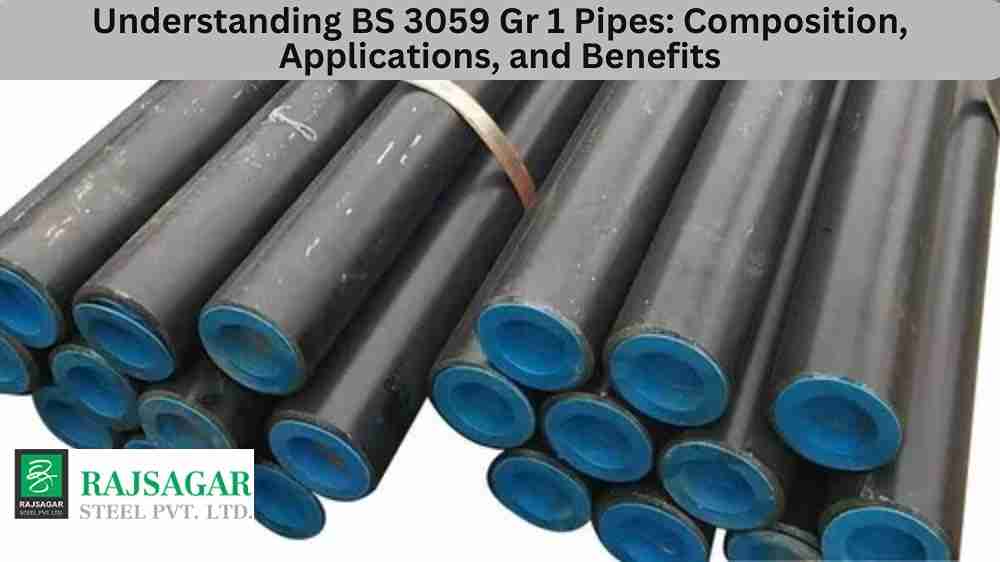When it comes to the industrial sector, the materials used for constructing pipes play a critical role in ensuring the systems’ safety, efficiency, and longevity. One prominent material used across various industries is the BS 3059 Gr 1 pipe. This blog post will dive deep into understanding these pipes, exploring their composition, applications, and numerous benefits, providing vital information for engineers, procurement specialists, and industry professionals.
What are BS 3059 Gr 1 Pipes?
BS 3059 Gr 1 pipes are carbon steel used extensively in various heat exchangers, like boilers and superheaters. They are part of the BS 3059 standard, which specifies requirements for carbon, alloy and stainless steel tubes used in heat transfer processes.
Composition
BS 3059 Gr 1 pipes are manufactured using high-quality carbon steel. They contain a mix of carbon and manganese, providing high tensile strength while maintaining good weldability and ductility. Here’s a closer look at their chemical makeup:
- Carbon (C): Provides hardness and strength; improves resistance to wear.
- Manganese (Mn): Increases toughness and strength; aids the steel during heat treatment.
- Sulfur (S) and Phosphorus (P): Generally kept to a minimum, as they can make the steel less tensile and impact toughness.
Mechanical Properties
The mechanical properties of BS 3059 Gr 1 pipes ensure they can withstand the demands of high-pressure and high-temperature environments. They include high tensile strength and good elongation, which means they can stretch or deform without breaking under stress.
Applications of BS 3059 Gr 1 Pipes
BS 3059 Gr 1 pipes are a staple in industries where heat exchange is crucial. Here are some of their primary applications:
- Boilers: They are used in the fabrication of boiler tubing, where heat from the combustion process is transferred to water to create steam.
- Superheaters: These pipes are ideal for superheaters that heat the steam from boilers beyond the boiling point.
- Heat Exchangers: BS 3059 Gr 1 pipes facilitate heat transfer between two or more fluids in this application.
- Economizers: Here, the pipes recover heat from boiler flue gases and use it to preheat the boiler feedwater, improving efficiency.
- Condensers are also found in condensers, where gases are cooled and condensed into liquid.
Benefits of using BS 3059 Gr 1 Pipes
The use of these pipes offers numerous advantages, which include:
- Durability: Thanks to their robust composition and manufacturing, these pipes are highly durable and can operate efficiently for an extended period.
- Corrosion Resistance: Carbon steel provides decent resistance to corrosion, which is critical in high-moisture environments and prolongs pipe life.
- Cost-Effectiveness: Compared to other materials, BS 3059 Gr 1 pipes offer a cost-effective solution without compromising performance.
- Flexibility in Specifications: These pipes come in various dimensions, ensuring they can be adapted to various industrial uses.
- High-Temperature Performance: They can perform at high temperatures, making them suitable for heat transfer applications.
Conclusion
For industries that demand high performance in terms of heat management and transfer, BS 3059 Gr 1 pipes are an excellent choice. They provide the reliability and efficiency needed in such demanding applications and offer cost savings and longevity. These qualities make BS 3059 Gr 1 pipes the backbone of industrial heat exchange systems.
Whether specifying materials for a new industrial installation or seeking replacements for existing systems, keep the properties and benefits of BS 3059 Gr 1 pipes in mind. Their selection could mean the difference between a system that merely functions and one that operates at peak performance.
Long-term performance, cost-efficiency, and adaptability make BS 3059 Gr 1 pipes a preferred choice in the ever-evolving industrial landscape.
Contact your trusted supplier or industry experts for further inquiries about BS 3059 Gr 1 pipes.
We hope this article has shed light on the important role of BS 3059 Grade 1 pipes in critical industrial applications. For more information on industrial applications and materials, please explore related articles on our site.

